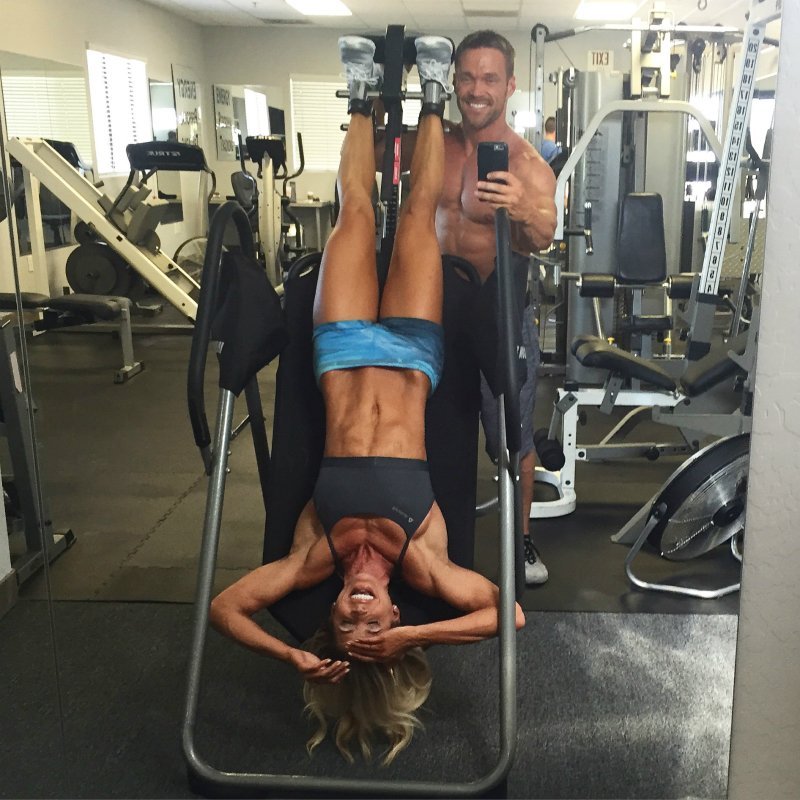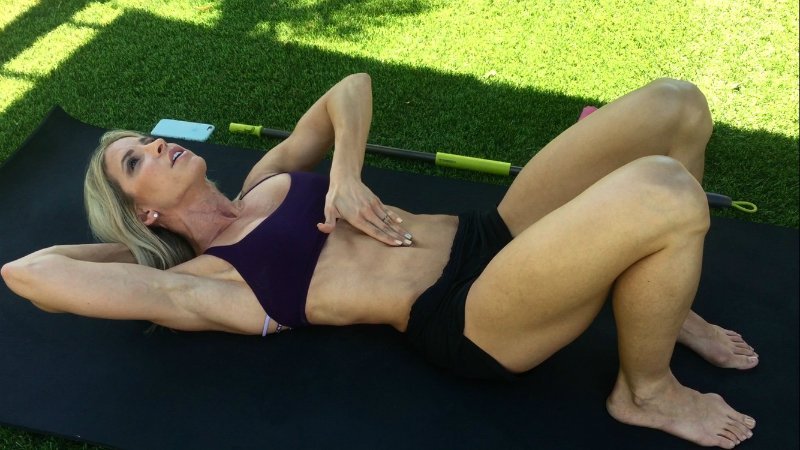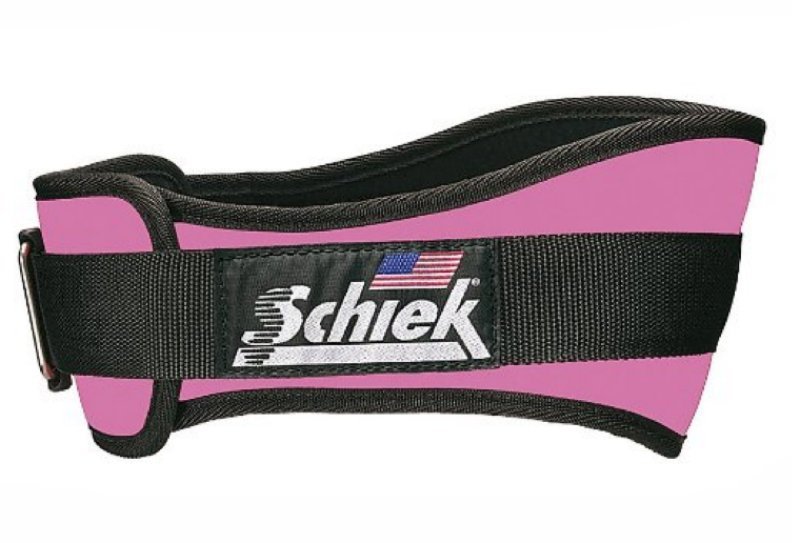Ok, here it is! Girl to girl, we need to discuss something I THINK is more common than I’ve ever believed! I’m getting a little personal and a little science-y on you today to talk about diastasis recti. Diastasis rect-who? Rect-ME! (Ok, stop).
I’m going to warn you up front. There is SO much to cover in this post—it’s a little long. If you wanna’ get straight to the meat (or the exercises you can do to fix your diastasis recti), scroll down. If you wanna’ learn more and figure out if you have this condition, keep reading.
Let me get you up to speed. Diastasis recti generally happens during pregnancy when the two large parallel bands of abdominal muscles separate due to the expanding uterus. Some women’s ab muscles go back to normal after the baby is born, and some do not…mine never have, and chances are yours haven’t either—which is why you are here.
The good news is that the diastasis caused by pregnancy can be corrected with exercises and stretches designed to optimize deep core muscular function. So ladies, don’t worry—your body wants to function right, and it will. We just need to wake up the right core muscles and teach them what to do! But let’s not get ahead of ourselves. Saving that for later.
Now how this happens and why it is worse for some women, no one is 100% sure. But we can hypothesize. It’s been said to be hereditary, but it may also be caused by working out your abs too soon after a baby is born, or even doing the wrong exercises WHILE pregnant. While I didn’t workout during ALL of my pregnancies (just the last 2), I personally feel like working my abs hard during prego worsened my condition. But that’s just my opinion.
Crazy fact, I didn’t even notice my ab separation until after Cash was born!! Yes, 3 kids later. I mean, I knew it was there, but I didn’t realize it was a medical condition. Embarrassingly enough, I always just thought I had definition down the center of my abs! Ha! Nope…wishful thinking. Just diastasis. Once I realized this odd look my midsection had wasn’t normal, nor was it normal for me to be able to literally stick my hand inside of my abs and touch my insides with just skin separating, I knew I had to do something about it. If you’d like a visual, just check out the pic below. This was posted on social media a couple of weeks back, and I got an overwhelming response from women (you!) that suffer from the same condition…
From a medical standpoint, until recently, I had a little over a 3-finger sized gap between my abs that was physically unprotected. Like I said, intestines…right below my skin. And during certain ab exercises, my insides would actually protrude through my abs, forming a weird point. Disgusting, I know. And it’s even scarier to think how vulnerable my vital organs were. If this went untreated, I could suffer from a major intestinal hernia, and given my level of activity (and types of heavy lifting), chances of this happening are higher than most. I mean, I already have an obvious umbilical hernia (my dramatic outtie belly button) so I figure I am more prone than most…
Extensive research on the topic taught me a few things…one of them being there are a handful of factors that make a woman more susceptible to diastasis recti:
- Having more than one child/pregnancy
- Having pregnancies close together
- Being?over the age of 35
- Having big babies
- Having multiple births
I know…some of you are looking at this ist realizing you’ve been double—or even quadruple—whammied! (I?m raising my hand to a couple). Don?t beat yourself up about what you cannot change because diastasis recti is very common—about 67% of all postpartum women have it. So you (and I) are in good company.
If you’re not sure if you are among the lucky few who steered clear of this pregnancy consequence, here’s an easy way to check:
- Lie on your back with your knees bent, soles of your feet close to your booty.
- Place one hand behind your neck and the other hand on your abdomen with your fingertips flat at your belly button, fingers facing downward.
- Gently push your fingertips into your abdomen while rolling your upper body off of the floor, chin towards the ceiling.
- Feel for a separation between those two ab muscles. Experts say that a 2-2.5 finger or more spread signals diastasis recti.
Now, let’s talk about our options moving forward. We can go the immediate and potentially easy (but expensive) route with surgery. BUT, surgery is not always recommended if you are still in your childbearing years…I mean think about it, one more baby, and you’ll pop those abs right back apart! As well, there is no guarantee that surgery will be 100% effective. (SIDE NOTE…Research on this topic started once Chris told me NO to this option because he wants more babies! Another topic for another day…but…).
So for me, at-home exercises and remedies are the way to go. Anytime I can avoid going under the knife, I will. And worst case? If the exercises don’t work, surgery as an option is always going to be there.
Before we go farther—a very important disclaimer: The following “fixes” are all based on my experience and my research, so please check with your doc BEFORE doing anything for your diastasis recti since each case is different. Okay, here goes:
Over this past year, my training protocol has changed as I have transitioned from CrossFit-style workouts to body building. Along with the training change-up, I changed the way I worked my abs too, focusing on decreasing (actually eliminating) the typical ab exercises and increasing the deep-core muscle exercises. I am happy to report that over this year, my abdominal muscle separation has decreased dramatically to less than 2 fingers!! But it still isn’t quite where I need it to be to consider myself healed.
The proof is in the pudding for me: A lot of this boils down to doing the RIGHT exercises. I realize that for so long I was doing what I intuitively thought would work (swing ups, sit ups, V ups, knees to bar, etc), but in reality, these move were working against me by ONLY working my Rectus Abdominus. The REAL muscles that needed working are known as the Transversus Abdominus and Lumbar Multifidus. These are the the most neglected of the ab muscles, but also happen to be arguably the most important. They lie beneath the Rectus Abdominus, supporting posture, controlling breathing during heavy lifts, and supporting the back. These are the muscles elite athletes work to add explosive power to training and are also the muscles we mamas need to work to relieve back pain, create a tighter midsection, AND improve our diastasis recti.
Some at-home exercises you can do to focus on these important muscles are below. I’ve also recorded a demonstration video for you (at the bottom of the post) so you can SEE how to perform these moves right and hear my instructions. Make sure that when you do these moves, you focus and move slowly—keeping the mind body connection. In other words, don’t just go through the moves. You’ll notice that breathing is a KEY component to all of these movements: Deep inhales, and exhale when you activate the muscles.
-
- Drawing In Exercise: Now technically every single move listed below requires you to “draw in,” so I figured I would do a little explaining. Drawing in is NOT sucking in (which uses the outer muscles). Drawing in is done by allowing those inner muscles to pull your abdomen deep inside toward your spine. Draw in from the lower region of your abs. Drawing in is something you can do in sets for as long as you can hold (work up to 60 seconds at a time), or it’s something you can simply do as you walk around your house. Believe it or not, your posture will improve big time with this! This can be done standing, sitting, lying down…you name it. Just DRAW IN!
- Vacuuming: No…not vacuuming your carpet (although I guess technically you can vacuum ON your carpet). I’m talking about the core exercise known by this name. I know I’ve talked about this before, but I’m going to talk about it again. Easily explained, simply stand up straight, inhale deeply, followed by an exhale. Once all of the air is deflated from your lungs, draw your belly button in and up toward your spine. HOLD (as tough as it is) for as long as you can. I aim for 30 seconds, but if holding your breath that long isn’t doable, simply keep the clock running and keep your belly button in and tight as you slowly breathe for the remainder of the 30 seconds. Try for 5-10 reps a day.
- Broomstick Rotations: With a dowel or a broomstick behind your neck, perform a vacuum, then when all air is exhaled and you are holding your breath with your abs squeezed, slowly rotate from side to side until you cannot hold your breath any longer. Breathe. Repeat 5-10 times.
- Abduction with Core Activation: Lie on your back with a resistance band around your knees. Exhale, engage your core and pelvic floor and pull your knees apart. Relax, inhale, and repeat for 10 reps. Be sure to keep your spine neutral and don’t press your lower back into the ground.
- Heel Slide: Lie on your back with both knees bent, feet flat. Exhale as you engage your core and pelvic floor, and slide one heel slowly along the ground until your leg is straight. Inhale and relax, then engage your core, exhale, and draw that heel back. Do 5 reps on each leg.
Once again, scroll to the bottom for my step-by-step video.
Now when it comes to traditional training and weight lifting, consider wearing a weight belt. It has worked WONDERS for me. Not only will a weight belt support your core while lifting heavy loads, but more importantly, it will act as a cue/reminder to activate and draw in with your core while lifting. Otherwise, we are naturally prone to distending our bellies during heavy lifting, only worsening our diastasis recti. This is the one I use…
So ladies, however you choose to take care of your diastasis recti, whether DIY exercises or surgery, know you are making the choice that is right for you! It’s a medical condition and not just a vain aesthetic concern, so if surgery is what you choose, then surgery it is! But if exercises are your method of healing, please keep me up to speed on your progress.
And in the meantime, have those babies, LOVE those babies, and appreciate every consequence of having such perfect little miracles! #BattleWounds
And finally…the demonstration vid…;)
Xoxo,
Heidi
Related reading:
Ask Heidi Anything: Carb Cycling While Prego?
My 1st Post Ruby Workout
My Pregnancy Workout: The Nasty 9s
My 5 Gym (and Home Gym) Must-Haves






262 Responses
Hi what excersizes were you doing while pregnant that you would recxomens avoiding that might worsen the issue?
Hi Bre: I’d chat with your doc about what exercises he/she recommends while you’re pregnant and to lessen the chances of DR. We wish you all the best! 🙂
Thank you so much for the info!! I have a question about how you mentioned we typically distend our bellies during lifting. Could this be why I am always bloated after I workout? I feel like no matter what kind of workout I do, lifting or HIIT, I’m always bloated afterwards. I’m definitely going to look into the weight belt!
Hi Ashlee: I don’t believe this could cause bloating. Bloating can be caused by the temporary water retention in your muscles after you lift/do workouts that really work those muscles. Hope this helps!
Thanks for your information! I have a 4-fingers sized gap between my abs, could you please tell me can I do squat and deadlift. Thank you so so much!!!
Hi Tranq: It would be best to discuss these exercises with your healthcare team and then follow their recommendations since what is best for each person with DR can be different. We wish you the best!
First I want to say I’m so happy I have found this website. I have been fit most of my life and was super fit before I started having babies. I believe I had DR following my first baby, possibly my second. I say this because I remember my OBGYN telling me I had this but didn’t make a big deal of it so I didn’t think it as a big deal. After my third child (which I stayed in good shape during this pregnancy) I finally figured out that this DR I have is causing my little belly pooch. I haven’t been able to get rid of it and it was driving my crazy since I run and lift and am in pretty good shape. So I am trying these exercises, which I know is going to help. But what I also wanted to say is you keep recommending that we check with out healthcare team, the problem is they don’t even tell you anything. My Doctor’s have know I have this but never gave any reccomendations on how to fix it. They told me I could have surgery if I wanted. I asked about doing ab exercises they said I could do whatever I wanted and nothing would hurt it. Obviously I now know better but wouldn’t have if I didn’t come across this article. So thanks!
I completely agree with Nlna COSAMANO. I asked my doctor about it and she told me she would have to Google this! After her “research”, she said this condition is only cosmetic and no health issues are caused by it. I’ve talked to other doctors and they all dismiss my concerns as “purely cosmetic issues”
Hi Heidi,
I found your video and blog searching for DR solutions. I’m pretty sure I developed the DR doing crossfit toes to bar way to many times the wrong way. I have tried different exercises without success. I wanted to post that I have also developed SIBO and other intestinal issues as a result of the DR. The internal muscles shift and can put pressure on the colon. I was unaware that this could be related. I’m starting your exercises, and hopefully it closes the DR.
Sincerely,
Michael
Great information! Generally how long does it take to begin to close the gap? And how will I know when it’s ok to return to other abdominal exercises without exacerbating the DR. I run, lift and do yoga but not seeing the progress I had hoped in my core tone and didn’t realize some exercises could make it more pronounced. I’ve been diagnosed with mild DR (2 finger width) after four babies (my last baby three years ago was a 10lb!).
Hi Jennifer: I’d definitely chat with your healthcare team about your DR since the recovery time can be different for each woman. We wish you all the best for a quick recovery! 🙂
Is it possible to fix diastasis recti 12 years after my last pregnancy? I have been doing an exercise class twice a week that includes body weight, kettle bell and dumbe exercises. My back muscles are very hypertrophied to make up for what I have just realized is core weakness and DR. Is it too late to heal this bulging?
Hi Linda: It would be best to discuss this with your healthcare team and then follow their recommendations. They are the best ones to help you with this since they know the extent of your DR and can work with you personally. We wish you the best! 🙂
Hey Heidi (& Chris) – what about obese men who develop this? I’m sure you’ve worked with many in your show that may have had this simply from such high amounts of fat on the inside? Same excercises or most likely need surgery since it wasn’t over a 9 month period- most likely much longer.
Hi John: We recommend that anyone who feels they might have Diastasis Recti talk to their healthcare team and then follow their recommendations for how to work towards healing. We wish you all the best!
Hi Heidi, what exercises can I do at the gym? What equipment can I use and which one is safe for me? I would like to get my tone abs back and reduce DR
Hi Martyna: Before you begin any exercise program, I’d talk with your healthcare team about what exercises are appropriate for you and then follow their recommendations. Since each case of DR and the correct treatment can be different, we’d hate to recommend anything that might make this worse for you.
I had my first child 1.5 years ago. I just learned that I have diastasis recti and I’m at a lost on how to exercise. I am doing the exercises on this blog to help bring together my separated abs, but what other exercises can I do to help lose the baby weight, specifically the belly weight. Please help!
Hi Marina: Be sure and discuss your diastasis recti with your doctor before doing any exercises to try and repair it since what works for one woman might not work for another. As far as losing weight, here’s a link to Chris and Heidi’s carb cycling program: https://heidipowell.net/9060. And be sure and follow all the links within the post too ? they lead to even more helpful transformation tools!And you might also want to check into Chris and Heidi?s new Transform app that?s about ready to launch ? it will outline everything you need to do for you every day! You can learn more about it here: http://thetransformapp.com. You can do this!